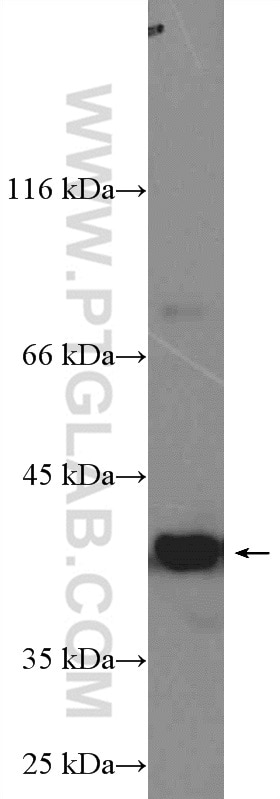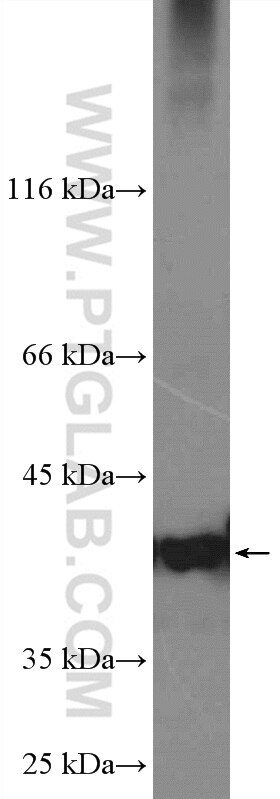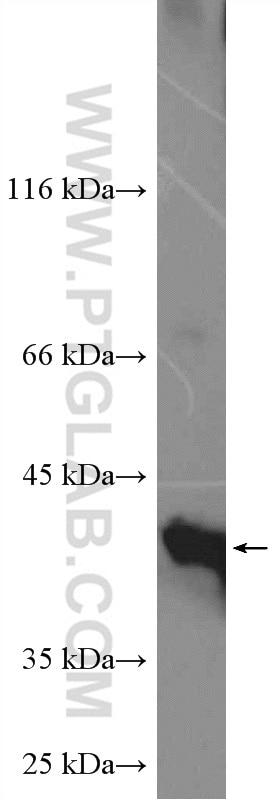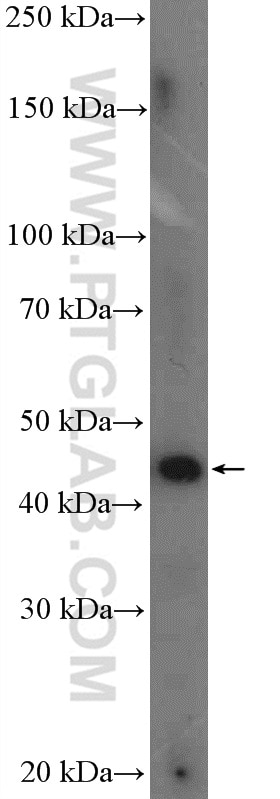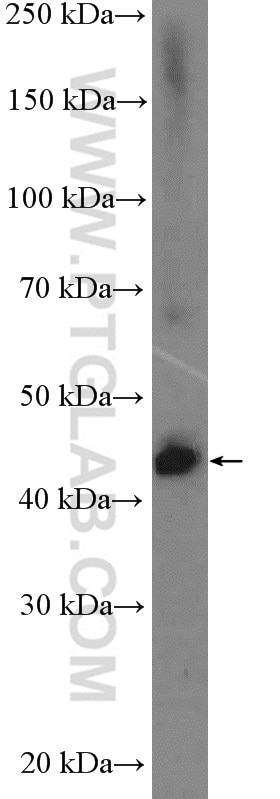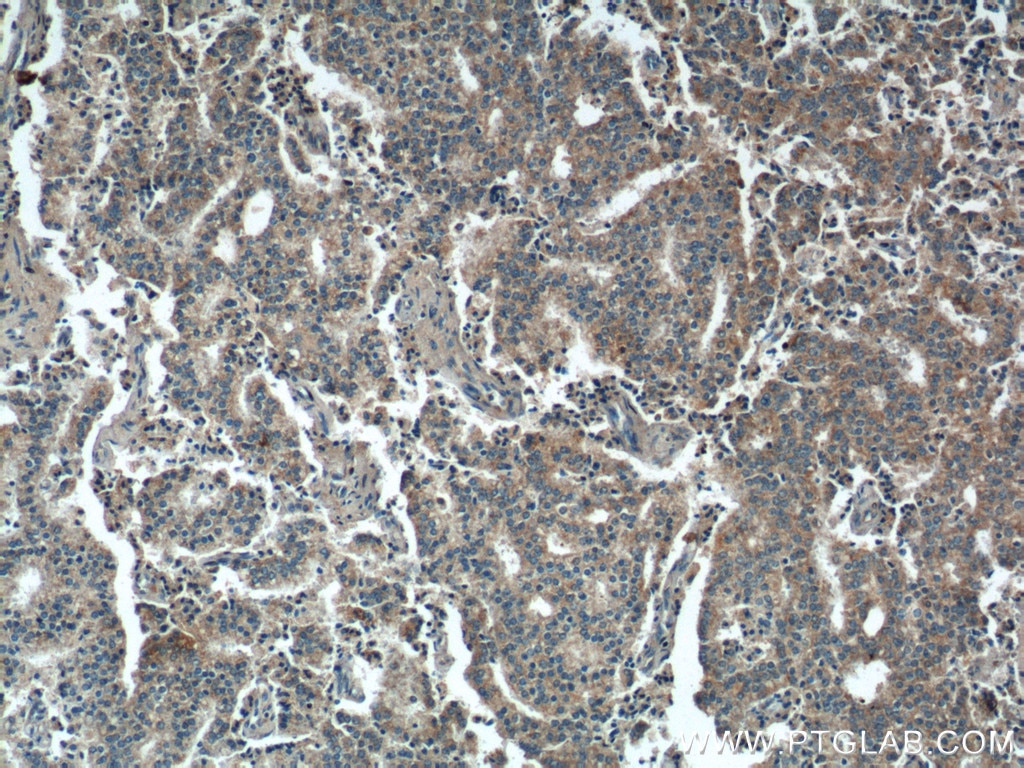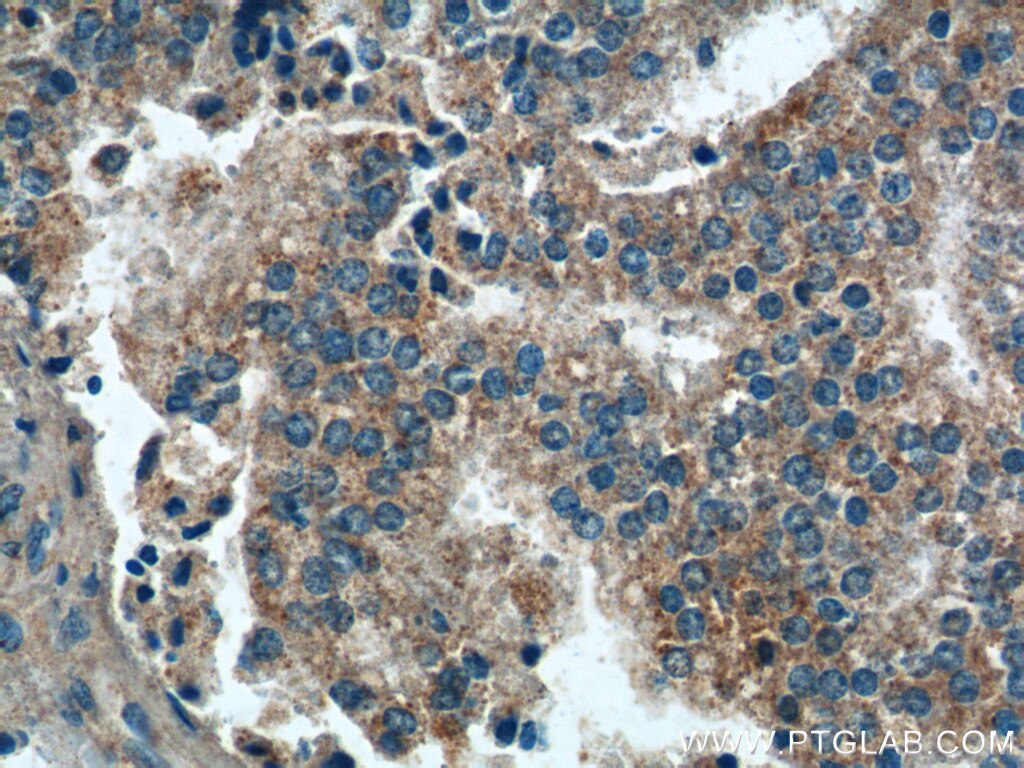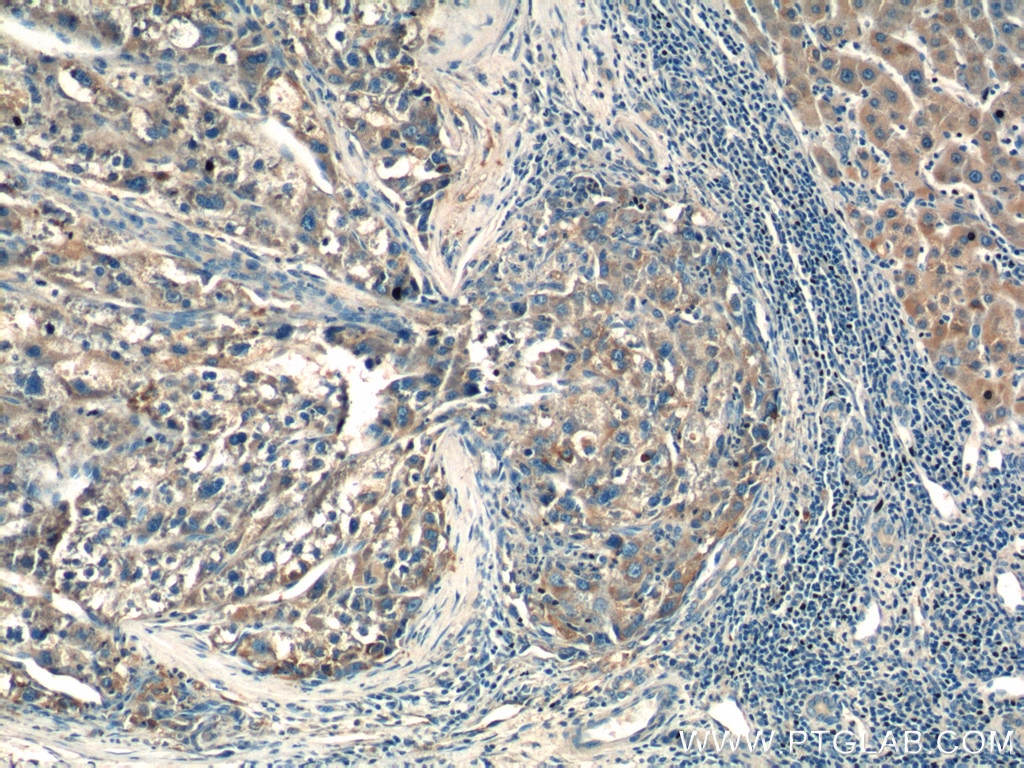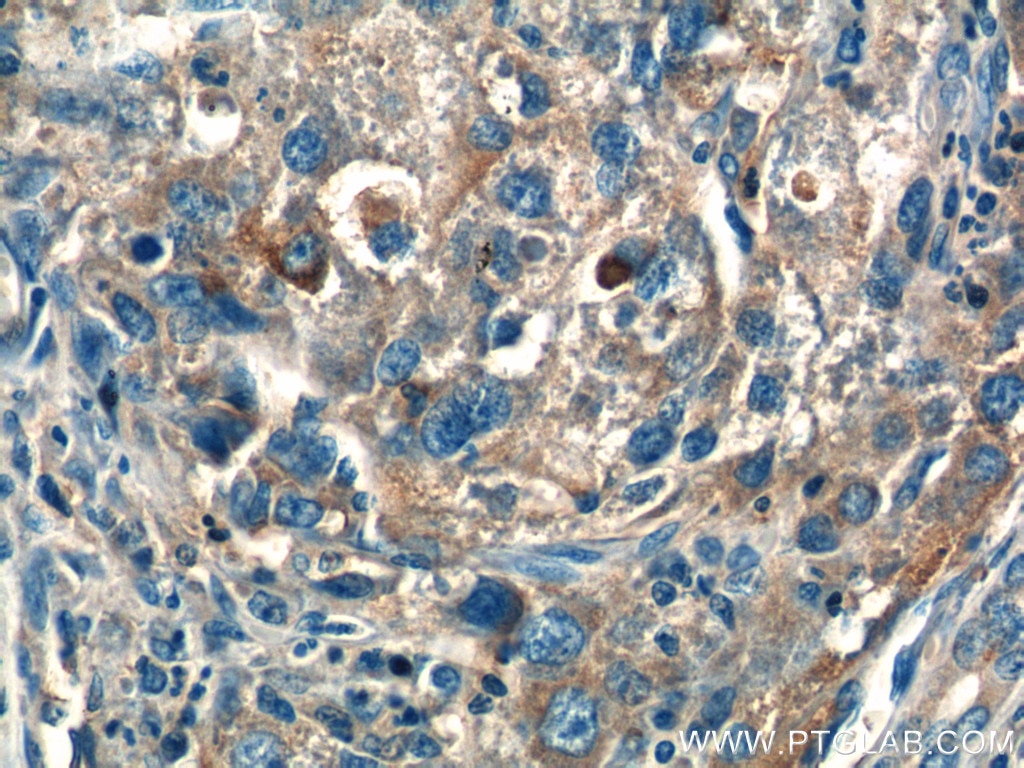PARL Polyklonaler Antikörper
PARL Polyklonal Antikörper für IHC, WB, ELISA
Wirt / Isotyp
Kaninchen / IgG
Getestete Reaktivität
human, Maus
Anwendung
WB, IHC, ELISA
Konjugation
Unkonjugiert
Kat-Nr. : 26679-1-AP
Synonyme
Galerie der Validierungsdaten
Geprüfte Anwendungen
| Erfolgreiche Detektion in WB | 3T3-L1-Zellen, HEK-293-Zellen, HeLa-Zellen, Neuro-2a-Zellen |
| Erfolgreiche Detektion in IHC | humanes Prostatakarzinomgewebe, humanes Leberkarzinomgewebe Hinweis: Antigendemaskierung mit TE-Puffer pH 9,0 empfohlen. (*) Wahlweise kann die Antigendemaskierung auch mit Citratpuffer pH 6,0 erfolgen. |
Empfohlene Verdünnung
| Anwendung | Verdünnung |
|---|---|
| Western Blot (WB) | WB : 1:500-1:2000 |
| Immunhistochemie (IHC) | IHC : 1:50-1:500 |
| It is recommended that this reagent should be titrated in each testing system to obtain optimal results. | |
| Sample-dependent, check data in validation data gallery | |
Veröffentlichte Anwendungen
| WB | See 4 publications below |
| IHC | See 1 publications below |
Produktinformation
26679-1-AP bindet in WB, IHC, ELISA PARL und zeigt Reaktivität mit human, Maus
| Getestete Reaktivität | human, Maus |
| In Publikationen genannte Reaktivität | human, Maus |
| Wirt / Isotyp | Kaninchen / IgG |
| Klonalität | Polyklonal |
| Typ | Antikörper |
| Immunogen | PARL fusion protein Ag24789 |
| Vollständiger Name | presenilin associated, rhomboid-like |
| Berechnetes Molekulargewicht | 42 kDa |
| Beobachtetes Molekulargewicht | 36-42 kDa |
| GenBank-Zugangsnummer | BC014058 |
| Gene symbol | PARL |
| Gene ID (NCBI) | 55486 |
| Konjugation | Unkonjugiert |
| Form | Liquid |
| Reinigungsmethode | Antigen-Affinitätsreinigung |
| Lagerungspuffer | PBS mit 0.02% Natriumazid und 50% Glycerin pH 7.3. |
| Lagerungsbedingungen | Bei -20°C lagern. Nach dem Versand ein Jahr lang stabil Aliquotieren ist bei -20oC Lagerung nicht notwendig. 20ul Größen enthalten 0,1% BSA. |
Hintergrundinformationen
PARL (Presenilin associated rhomboid like), is a member of the rhomboid family of intramembrane serine proteases that is localized to the inner mitochondrial membrane. PARL has 2 isoforms produced by alternative splicing with the molecular mass of 42 kDa and 37 kDa. PARL regulates mitochondrial remodeling and apoptosis through regulated substrate proteolysis. Proteolytic processing of PARL may result in the release of a small peptide, P-beta, which may transit to the nucleus. The self-regulated cleavage of PARL at positions 52-53 (α-site) and 77--78 (β-site) produce two cleaved forms of PARL named MAMP and PACT with the molecular mass of 36 kDa and 33 kDa respectively (PMID: 14732705, 28178523).
Protokolle
| Produktspezifische Protokolle | |
|---|---|
| WB protocol for PARL antibody 26679-1-AP | Protokoll herunterladen |
| IHC protocol for PARL antibody 26679-1-AP | Protokoll herunterladen |
| Standard-Protokolle | |
|---|---|
| Klicken Sie hier, um unsere Standardprotokolle anzuzeigen |
Publikationen
| Species | Application | Title |
|---|---|---|
Cell Rep TIM23 facilitates PINK1 activation by safeguarding against OMA1-mediated degradation in damaged mitochondria | ||
Int J Mol Sci The Mitochondrial PHB2/OMA1/DELE1 Pathway Cooperates with Endoplasmic Reticulum Stress to Facilitate the Response to Chemotherapeutics in Ovarian Cancer. | ||
Cells Disruption of Mitophagy Flux through the PARL-PINK1 Pathway by CHCHD10 Mutations or CHCHD10 Depletion | ||
J Biol Chem Diverse mitochondrial abnormalities in a new cellular model of TAFFAZZIN deficiency are remediated by cardiolipin-interacting small molecules. | ||
Front Pharmacol Heat Shock Transcription Factor 2 Promotes Mitophagy of Intestinal Epithelial Cells Through PARL/PINK1/Parkin Pathway in Ulcerative Colitis. | ||
Nat Cell Biol Small heat shock proteins operate as molecular chaperones in the mitochondrial intermembrane space |
